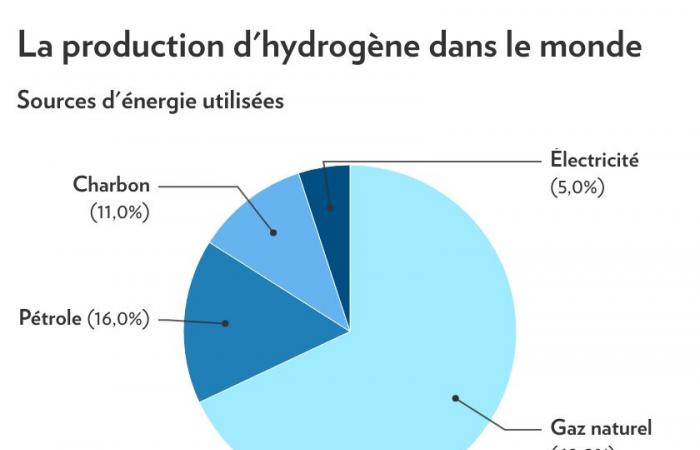After hearing that green hydrogen could save the planet, many people ended up believing it. But not all. Starting with the first interested party, the market.
Published at 8:00 a.m.
Hydrogen is far from being a new invention. We already produce 90 million tonnes per year worldwide. What is new is that we want to produce it with renewable energy, like Quebec’s electricity, to replace the hydrogen produced with natural gas and used in oil refining and the production of fertilizer.
Hydrogen also and above all promises to decarbonize industrial activities that cannot be electrified such as aviation, maritime transport and road transport.
This potential market is slow to develop, for good reason. Green hydrogen costs two to three times more than hydrogen produced with natural gas and is poorly transported. Other decarbonization technologies are competing with green hydrogen and moving ahead.
Planes currently fly with so-called sustainable fuel, known by the acronym SAF (Sustainable Aviation Fuel), made with used oils and agricultural residues. Increasingly, experts believe that it is more advantageous to directly electrify heavy transportation rather than using electricity to make green hydrogen that would power trucks.
Fossil-source hydrogen producers are eyeing technology that captures the carbon emitted by hydrogen production, which they transform into low-carbon hydrogen, also called blue hydrogen.
The potential market is shrinking. Barely four years ago, in developing a strategy to break into this market, the Canadian government estimated that the global hydrogen market would reach $11,000 billion in 2050. Last April, Natural Resources Canada reduced this estimate to a just under $2 trillion. That’s a difference of 80%.
In the United States, the firm McKinsey has just reduced its target for green hydrogen production in the United States by 70% for 2030, reports the Financial Timesdespite the avalanche of announced projects.
On the stock market, the value of shares of companies linked to the hydrogen market is in free fall after having experienced a frantic rise. A portfolio of 45 of these companies tracked by the International Energy Agency saw their market capitalization decline to what it was in May 2020.
There is certainly a place for green hydrogen in the energy mix of the future. But this will not live up to the expectations raised by the promoters of the sector. The bubble is deflating everywhere. In Europe, we saw green hydrogen everywhere. The objective was to produce 10 million tonnes per year and to import 10 million tonnes from countries better equipped with renewable energy, including Canada (and Quebec). Belgium had set itself the objective of becoming the European crossroads for green hydrogen with a network of pipelines connecting several neighboring countries thirsty for energy.
Everything indicates that none of this will happen, despite the public funds available to develop this sector in Europe, Canada and the United States. Of the multitude of green hydrogen production projects announced in recent years, very few have been carried out and many have been put on hold or abandoned.
In Canada, the Australian company Fortescue has given up on building a hydrogen plant in British Columbia which was to be the largest in Canada, due to the high price and lack of availability of electricity. The project known as Project Coyote would have required 1,000 megawatts of electricity.
Quebec, which has been flooded with hydrogen production projects due to the low price of its hydroelectricity, has welcomed a few. TES Canada received 150 megawatts to produce green hydrogen which will be used for uses that have yet to be determined for buyers that have yet to be identified.
HY2gen, on the North Shore, obtained 307 megawatts from Hydro-Québec to produce hydrogen which will be used to produce ammonia intended for the manufacture of explosives for the mining industry.
Green electricity is a rare and increasingly expensive resource that must be used judiciously, believes researcher Johanne Whitmore, from the Chair in Energy Management at HEC Montréal. Quebec’s megawatts would be better used, according to her, to decarbonize the production of hydrogen from fossil natural gas which already exists rather than to chase new markets which are always hypothetical.







